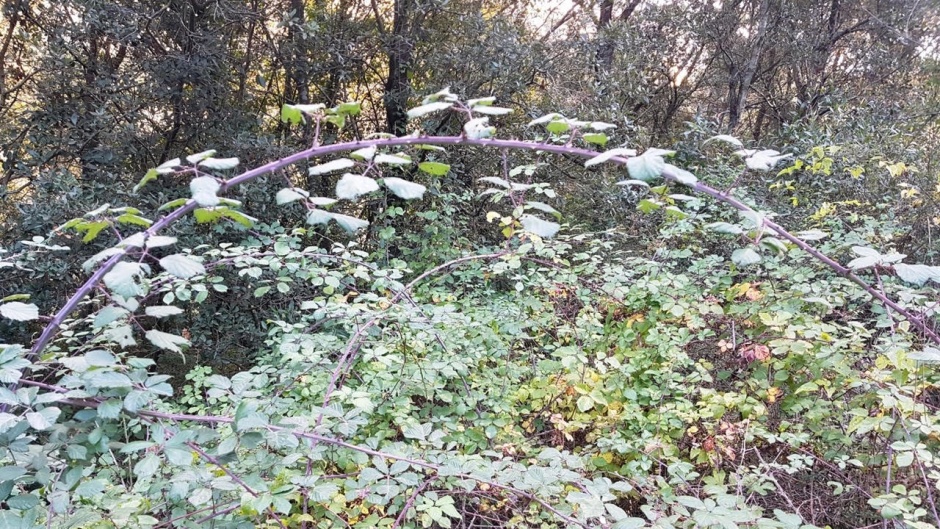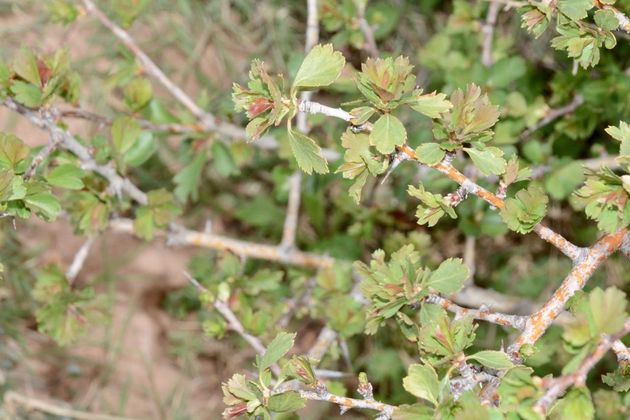The Bible says God used a thorny bush which burned without being burnt up to manifest himself to Moses, as no human being could look at the Almighty directly.
 Photo: Antonio Cruz.
Photo: Antonio Cruz.
There the angel of the Lord appeared to him in flames of fire from within a bush. Moses saw that though the bush was on fire it did not burn up. (Ex. 3:2)
Abraham looked up and there in a thicket he saw a ram caught by its horns. He went over and took the ram and sacrificed it as a burnt offering instead of his son (Gn. 22:13)
The common name “thicket” corresponds to a very thorny bush which, when it grows, can become so thick that it is impenetrable.
It is not easy to identify exactly which botanical species the different Biblical texts refer to, as there are a number of species of plant in the Holy Land which are potential candidates.
Besides, in the Hebrew Bible there are many different words for plants with thorns. Thus, for example, the term kharul which is translated variously as “thorns”, “nettles” and “burning” (Job 30:7; Proverbs 24:31; Zephaniah 2:9), must refer to a large enough plant to shelter people in its shade, and one which grows quickly in uncultivated land.

Another word is barganim (Judges 8:7, 16), which was translated as “thorns and thistles”, and which would correspond to some smaller species of the Rubus genus, abundant in Palestine and in the Sinai peninsula, like the subspecies Rubus ulmifolius sanctus, whose popular name is the “holy bush” because, according to the tradition, this is the burning bush which Moses encountered.
It is characterised by its small pink flowers, its many thorns and its longevity.
The Hebrew words khedeg (Micah 7:4), shamir (Is. 5:6; 9:18; 10:17; 22:23) and shayth (Is. 7:23-25) refer to different plants with sharp thorns.
Other scholars also interpret the term seneh as the thorny plant which appears in Exodus as the “burning bush” (Ex. 3:2-4; Dt. 33:16).
It is thought by many to be the white hawthorn (Crataegus x sinaica), a species which was the result of the hybridisation of two different species Crataegus azarolus y Crataegus monogyna, both of which are present in Israel and Egypt (the Sinai peninsula).

The Arabic word sanna is also used to indicate bushes with thorns.
The bramble patch is an area thick with thornbushes and, in Hebrew, there are three different terms to refer to it.
The first of them is sebakh, which denotes the density of the thicket, and it is the term used in relation to the ram which God provided for Abraham when he was about to sacrifice his son Isaac (Gen. 22:13).
The second term is naatsuts, which means “thorny undergrowth”, and it appears only in two biblical texts (Is. 7:19; 55:13), while the third term is mesukhah and also means “thicket”, but in the sense of a hedge or fence surrounding a field or a vineyard (Michah 7:4).

Whichever the precise botanical species referred to, what is certain is that, according to the Bible, God used a thorny bush which burned without being burnt up to manifest himself to Moses, as no human being could look at the Almighty directly and remain alive (Judges 6:22-24; Is. 6:5).
This means, among other things, that even the most humble organisms on the planet can reflect the Glory of God. Besides, the Hebrews particularly despised the thorny bushes of the desert, as they were cursed by God due to original sin (Gn. 3:18).
Nevertheless, there are times when God chooses the most humble and contemptible things in the world to manifest his eternal purposes, and to host the fire of the Spirit.
The seneh was the thorny plant that burned but was not consumed, because God’s fire does not destroy but produces eternal life.

Las opiniones vertidas por nuestros colaboradores se realizan a nivel personal, pudiendo coincidir o no con la postura de la dirección de Protestante Digital.
Si quieres comentar o